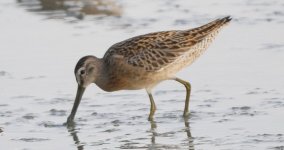
Thank you in advance for the help. First image shows three dowitchers with relatively long bills. Image 2 and 3 are zooming in on two different ones of these. Image 4 and 5 are one or two different birds with very much shorter bills. I have these down as short-billed D while I am less certain whether I could have found a small group of long-billed D for the first three images? Shortbilled is by far the more common species. (and if I am completely off, please tell me that too).
Niels
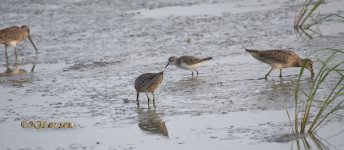
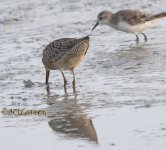
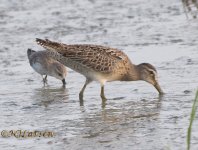
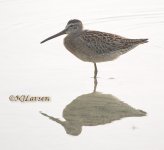
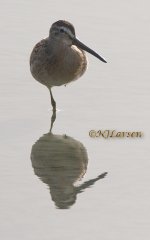
Niels









